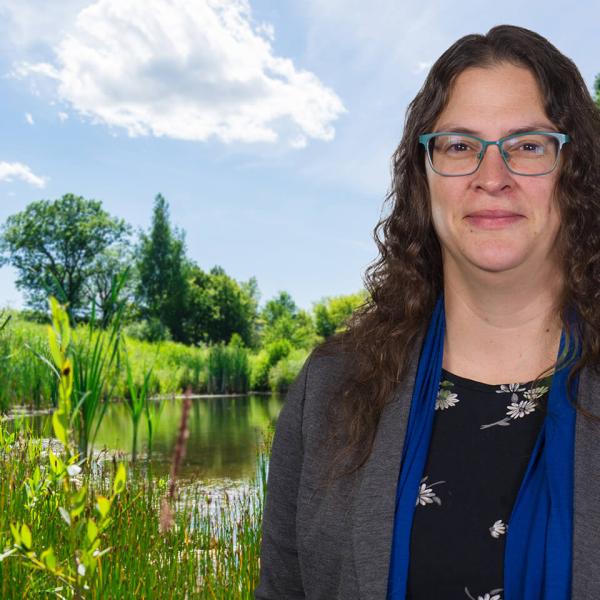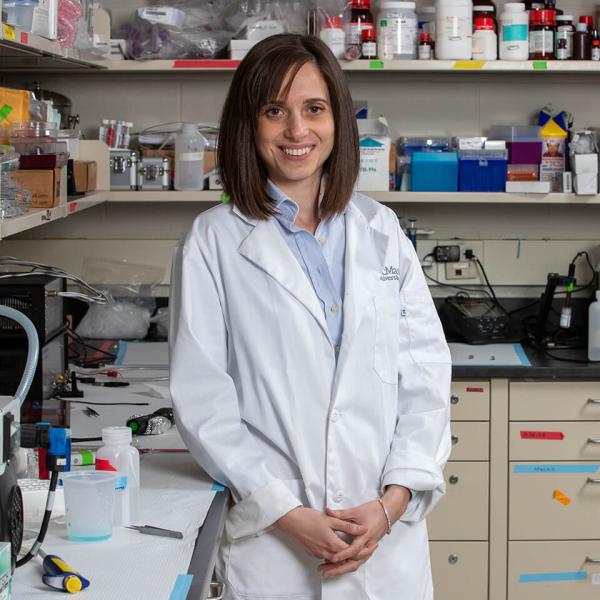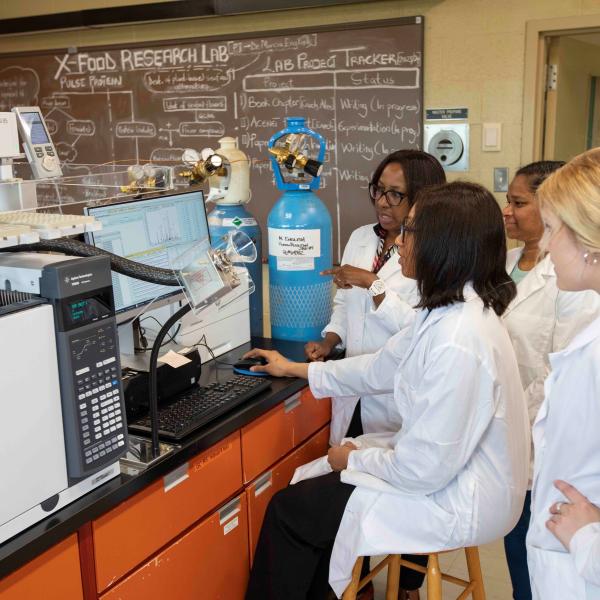Unlocking the potential of passive air sampling
Traditionally, scientists have used active sampling methods to measure the particulate matter and other air pollution that individuals inhale. This requires research subjects to carry heavy, battery-powered devices that pull air through an absorbent cylinder. But the cost — $2,000 to $3,000 a piece — and the cumbersome nature of the equipment make large-scale studies unfeasible.
To find a better way of assessing air quality, Okeme turned to the emerging field of wearable passive sampling devices. This approach relies on the process of diffusion, where molecules naturally move from the air to the surface of a wearable device.
Some researchers have developed wristband samplers. Others have opted for brooches. Unfortunately, both devices are prone to cross-contamination. Every time the wristband touches a tabletop or a brooch-wearer hugs someone, the sample is spoiled.
Okeme hit on a better solution — passive sampling eyeglasses — while conversing around a conference table packed with colleagues who wore glasses. “Of course,” he thought. Not only would eyeglasses be less prone to contamination, but collecting samples closer to the nose and mouth would provide a more accurate picture of the contaminants someone inhales.
His team set about developing prototypes. They tested different surfaces to assess how different materials affect the absorption of chemicals and calibrated the trial glasses against active samplers. Okeme also collaborated with engineering colleagues at McMaster to add wind speed sensors to the glasses, allowing them to understand how air flow impacts uptake.
Now his team is ready to start recruiting trial volunteers. After wearing the low-cost glasses for a day, participants will simply swab the lenses with an alcohol wipe, put the wipe into a vial and mail it back to Okeme’s lab.
Working with instruments at different levels, both new and very old, has been really fun … I definitely want to stay in this field.
— Parshawn Amini, McMaster University
The power to detect 1,000 different chemicals
But tracking individual exposure is just half the problem. Next comes the challenge of analyzing those samples. Air can contain thousands of chemicals — many at extremely low levels — and most have never been characterized.
That’s where a new CFI-funded gas chromatography mass spectrometer is making a significant difference. Once the wipes come in, the researchers will extract and concentrate each sample and then run it through the million-dollar machine.
“While a traditional approach using a low-resolution instrument might identify 10 chemicals, the Orbitrap mass spec system can confidently identify a thousand chemicals,” says Okeme. “It’s able to identify and quantify chemicals that are present in very trace amounts.”
Dialling up the sensitivity of the machine on the initial pass allows the algorithms to detect what compounds of interest are potentially present. Then can dial up the Orbitrap’s resolution and compare the sample against standardized amounts of those chemicals, confirming which ones are present and quantifying exactly how much of each.
“With the Orbitrap’s capacity to do this ‘machine learning fingerprinting,’ we could potentially find things that we weren’t looking for,” says Parshawn Amini, a master’s student in Okeme’s lab. “Or we can go back in data that was from the past and look for something new that we weren’t looking for previously.”
Simple sampling meets sophisticated analysis
Combining the ease and affordability of their passive sampling glasses with high-resolution analysis creates a powerful way to understand what chemicals we’re breathing in on a daily basis.
It allows researchers to cast their net wide, identifying hazardous pollutants that might not be on our radar. At the same time, they can dig deep, quantifying exposure to problematic chemicals and assessing how it differs depending on where you live, where you work and other socioeconomic factors.
Those insights promise to help public health officials and policy makers reduce some of the risk factors for chronic diseases that cost Canadians so much.
“Your environment affects you, but you can control your environment,” Amini points out. That’s why he wants to pursue a career where he can use his mass spec skills to understand the chemicals we’re exposed to, inform public health policies and keep us all a little healthier.

There are very few labs globally that have access to the Orbitrap gas chromatography mass spec system … [I’m] very, very thankful to CFI for such an incredible opportunity.
— Joseph Okeme, McMaster University
The research project featured in this story also benefits from funding from the Natural Sciences and Engineering Research Council of Canada.






